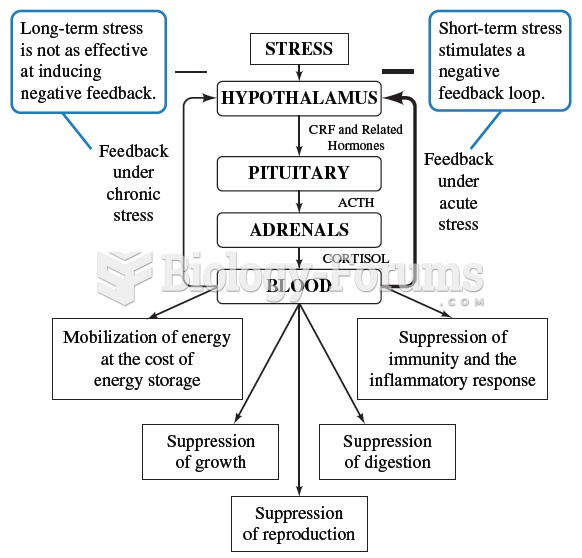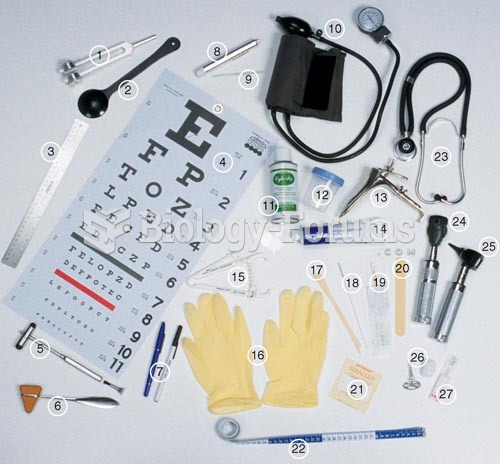Answer to Question 1
A
Feedback
A Correct. Several developmental variations increase the pediatric population's risks for acquiring a respiratory system dysfunction. Small airways, fewer alveoli, and increased chest compliance are leading factors that predispose to respiratory alterations.
B Incorrect. Among age-related physical differences in infants that most increase this population's risks for developing a respiratory system dysfunction, the shape of the chest and smaller ribs are not factors.
C Incorrect. Among age-related physical differences in infants that most increase this population's risks for developing a respiratory system dysfunction, abdominal breathing is not a factor (infants are nose breathers).
D Incorrect. Among age-related physical differences in infants that most increase this population's risks for developing a respiratory system dysfunction, their weight-to-height ratio is not a factor (alveolar surface for gas exchange is more limited in relation to height and weight).
Answer to Question 2
C
Feedback
A Incorrect. Bandura suggested that children acquire new behaviors from observational learning in which they observe others, not by being observed by teachers.
B Incorrect. Bandura suggested that children acquire new behaviors from observational learning in which they observe others, not by being observed by caregivers who share these observations with behaviorists.
C Correct. Bandura suggests observational learning (learning that results from merely watching others), there children acquire a variety of new behaviors when models are merely pursuing their own interests and not attempting to teach, reward, or punish, is another important method of learning behaviors.
D Incorrect. Bandura suggested that children acquire new behaviors from observational learning in which the behavior is learned when the teacher or model is least aware they are being observed.







